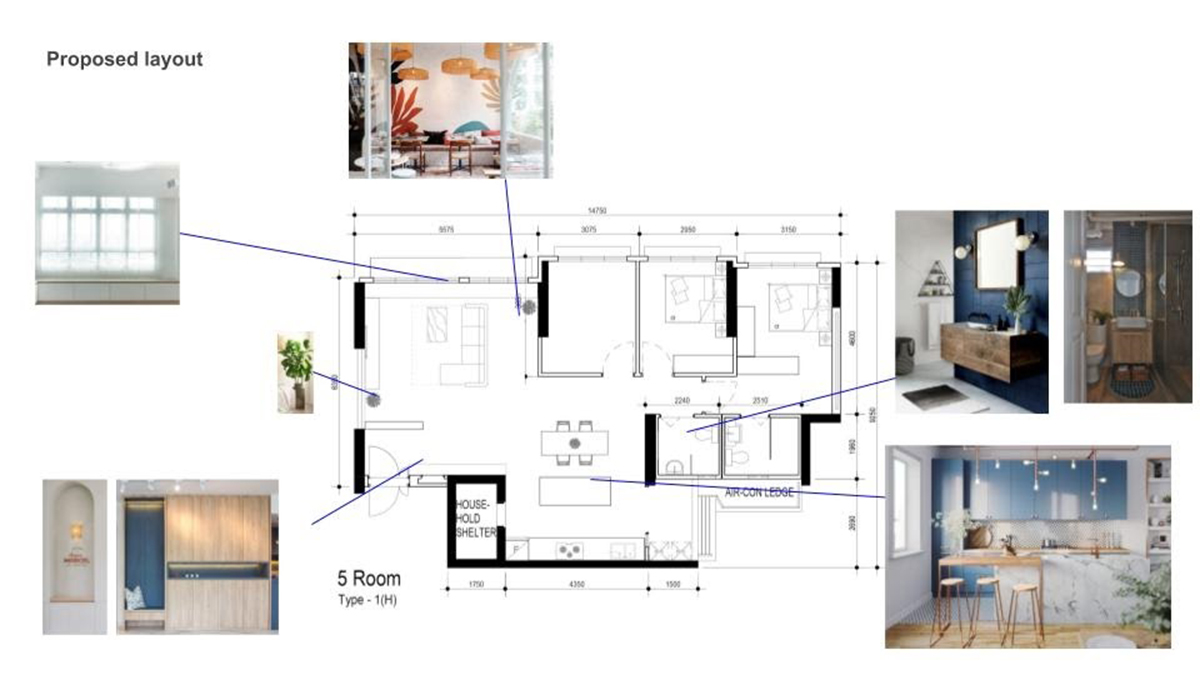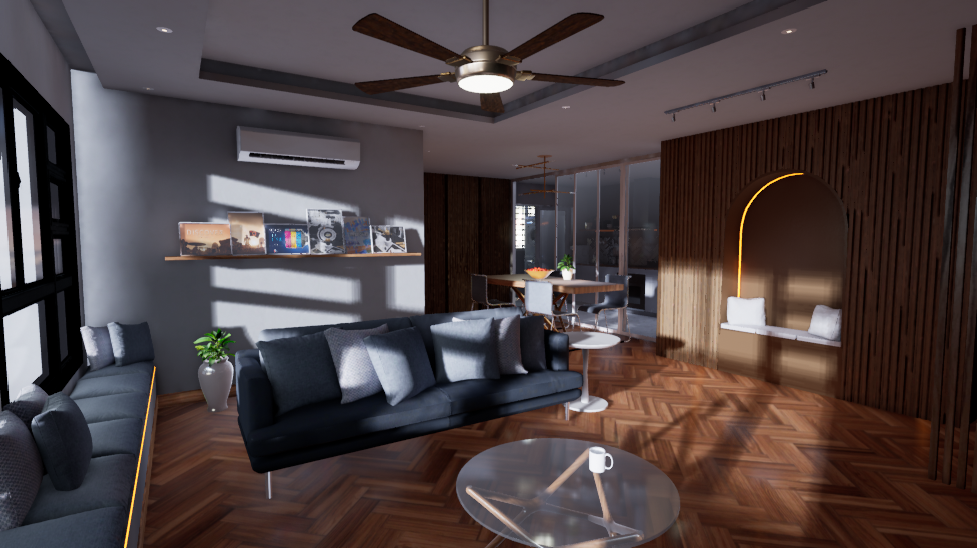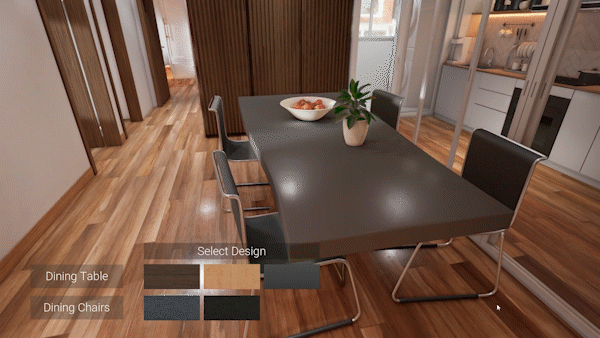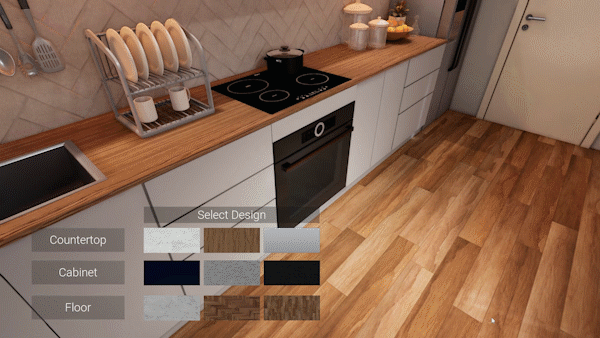

For this project we had the opportunity to design one of our colleague's new house and present it in real-time with Unreal Engine.
The process starts with constructing the moodboard, a visual presentation where we get inspirations and the general idea of how the interior will eventually look like. This includes studying how light affects the mood of the scene, and the choice of materials to create a rustic feeling. With that, we settled on warm tones complemented by natural elements such as wood and marble.


Once the direction is approved, we proceed with the design in Maya, building many of the items and arranging them in 3D. We then proceed to Unreal Engine (UE), a powerful game engine, for the shaders and lighting.
Going with UE made it possible to work interactively in real-time, granting us much faster changes. It also allows us to leverage on Virtual Reality (VR), unlocking a more personal perspective by transporting the viewer into the digital house instantly. Both techniques do not exist in conventional interior design workflows.

As it is our first foray on a project of this specific nature, we initially made everything very modern, sleek, and appealing. The results were unnaturally perfect and dissatisfactory. Observing the world around us, things are usually never pristine, and adding that little imperfection goes a long way in pushing the project further.

While designing, we were spoilt for choice on many of the textures and materials. To expedite the process of showing home owners the various choices, we were greatly inspired by Castlery Virtual Studio and IKEA’s Virtual Reality Showroom. This made us quickly set up our own User Interface (UI) options.
Our UI included a couple of options of the user to instantly compare textures and colour of the furniture, while touring around the house. Options were carefully selected and limited to ensure that the user wouldn’t be overwhelmed with an endless amount of choices. All these allow for a deeper and immersive experience.


With the current pandemic situation, it is difficult to constantly have face-to-face meetings with an interior designer. Traditional techniques, such as catalogues and rendered images, are also less effective comparatively.
 AMC House Interior Virtual Reality experience
AMC House Interior Virtual Reality experience As VR continues to advance, we hope to bring more projects towards VR, bringing on more immersive experiences for everyone to enjoy. Allowing designers to easily create a scene for clients to explore and experience.
We look forward to the improvement of user experience in VR through wireless VR sets, gloveless finger tracking or even haptic feedback gloves.
Using Virtual Reality could be the future for designing homes, and with ever changing advancements in technology, we are creating visuals that were not previously possible.
Do check out our website for more projects and follow us on social media as we bring more content to you in future!